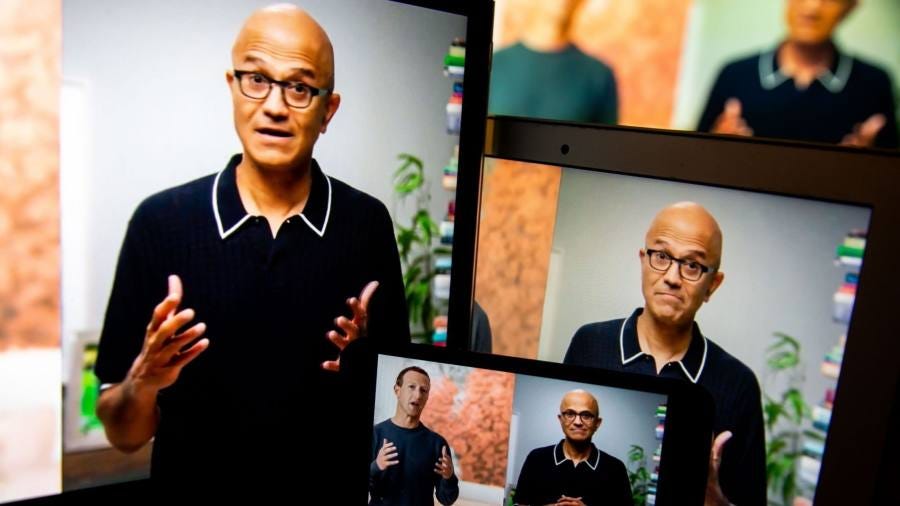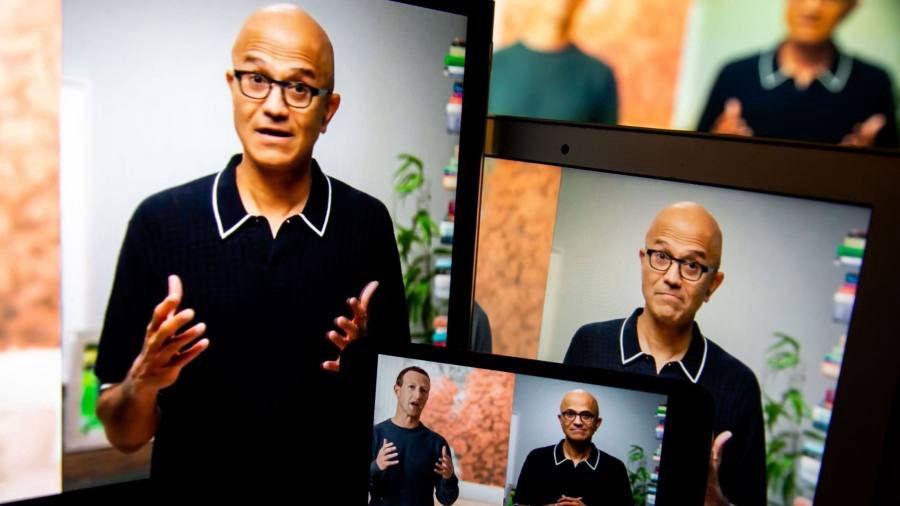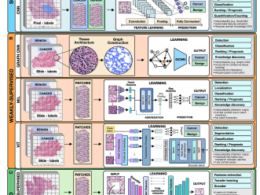Financial Times
richard waters
Octobeer 14, 2022
Site Editor:
Joaquim Cardoso MSc.
health transformation . institute
October 14, 2022
Is it the stuff of flashy tech demos or a real technology that is already starting to transform the business world and the working lives of millions?
Artificial intelligence has long been recognised as the most important new general-purpose technology for a generation. But it has been less clear how its impact will be felt in everyday business life.
This week’s annual developer events from some of the biggest US tech companies have been a good moment to take the temperature.
Microsoft, Meta and Google’s cloud division each made a case to developers for why their tech platforms deserve attention, with prowess in AI very much at the centre.
Microsoft, Meta and Google’s cloud division each made a case to developers for why their tech platforms deserve attention, with prowess in AI very much at the centre.
“We are at a tipping point” for the technology, claimed Google chief executive Sundar Pichai.
Not to be outdone, his counterpart at Microsoft, Satya Nadella, called this “a real inflection point”.
The claims did not sound new, but the extent to which AI now suffuses many of their products and services was evident.

Central to the competition between the giant cloud platforms has been supplying the tools for large customers to collect and prepare data, train AI models and apply the technology in practice.
- The sales pitches from the tech companies now depend heavily on the ease of use and lower cost of their particular services — a sign that the technology has reached the stage of wider deployment.
- Google, meanwhile, repeated its long-running case to the business world that it is opening up advanced technologies that were developed for its own internet services.
- Yet it is still a distant third to Amazon Web Services and Microsoft in the cloud market and has struggled to translate its leadership in AI research into a business advantage.
The latest business service to draw on Google’s core AI technology, called Translation Hub, tries to turn its online translation engine into an enterprise-grade tool for organisations that operate in multiple countries.
As always, the test will be whether it can come up with a practical service to solve a real business need, rather than just repackaging an impressive technology.
The latest business service to draw on Google’s core AI technology, called Translation Hub, tries to turn its online translation engine into an enterprise-grade tool for organisations that operate in multiple countries.
Beyond handing customers general AI tools, Microsoft’s Ignite event also showed just how many of its own services now depend on the technology.
That includes using AI to make it easier for business users to create lightweight apps — part of the “low-code” revolution that is putting the power of coding into the hands of many non-programmers.
Microsoft is also leading the race to build useful products from the AI systems that automatically produce text or images to match a given prompt.
Its latest, called Designer, incorporates the Dall-E 2 image generator in a piece of software aimed at small businesses.
Along with design templates to help users create their own marketing and other material, Microsoft says the service will suggest original content — a potential challenge to design software companies like Adobe and Canva.
Microsoft’s Designer shows how fast generative systems like this are moving into general use.
Yet many of the applications discussed at Microsoft’s event remain theoretical: success will depend on packaging technologies in ways that make them safe and productive to use, as well as fitting into existing working practices.

This week’s tech events were also a reminder that AI is a key enabling technology behind the metaverse — though here, at least, it is still largely confined to the realm of tech demos.
That has been most notable in the race to generate more lifelike avatars to populate the future digital worlds.
As was made clear by a partnership this week to bring Microsoft’s workplace meetings and other productivity tools to Meta’s virtual reality headsets, workers are very much the first target market.
As was made clear by a partnership this week to bring Microsoft’s workplace meetings and other productivity tools to Meta’s virtual reality headsets, workers are very much the first target market.
Meta, which has poured more investment into VR than any of its rivals, turned heads with demos from its research labs this week showing the big steps it is taking towards creating lifelike avatars.
Google, going one better, said it was ready to let some companies use prototypes of its Project Starline kiosks, where users can talk and make eye contact with near-lifelike 3D renditions of fellow workers who are far away.
But for now, it is Microsoft’s more rudimentary build-your-own avatar system, for use with its Teams meeting software, that is leading the way into business use, with the announcement that the first private tests of the system are about to begin with customers.
Will the millions of workers who use Microsoft software want to be represented on work video calls by a cartoon avatar?
If the answer is yes, it will be a big step forward into a new world of work shaped by AI.
… for now, it is Microsoft’s more rudimentary build-your-own avatar system, for use with its Teams meeting software, that is leading the way into business use, …
Originally published at https://www.ft.com on October 13, 2022.












